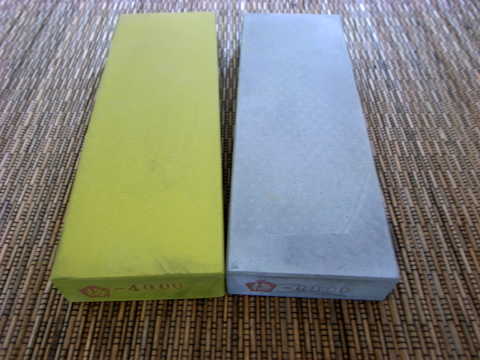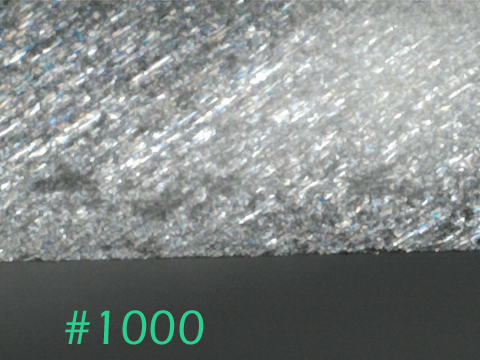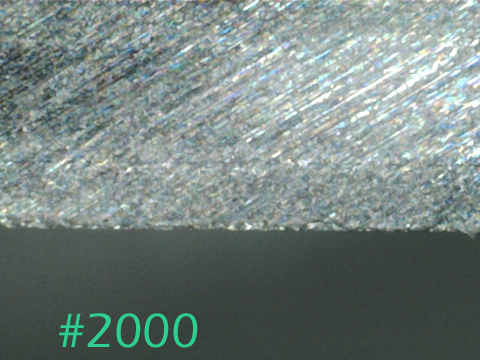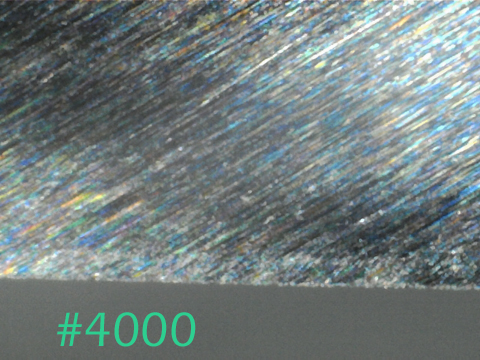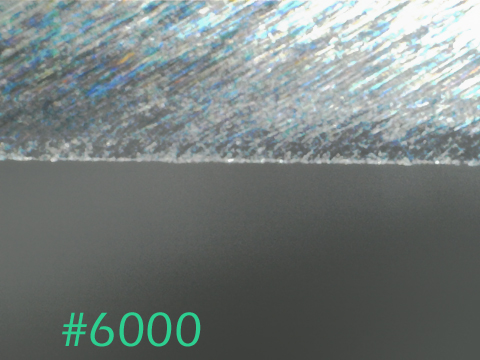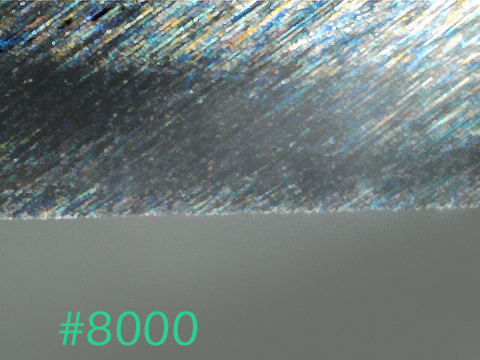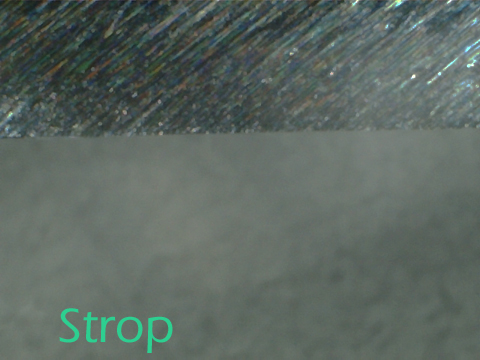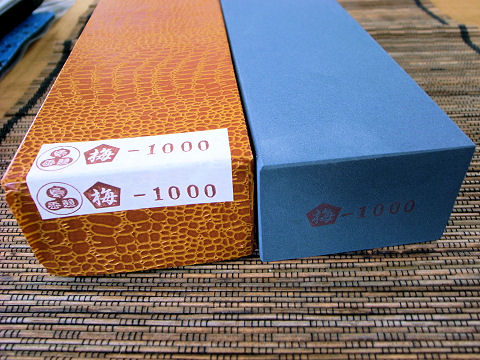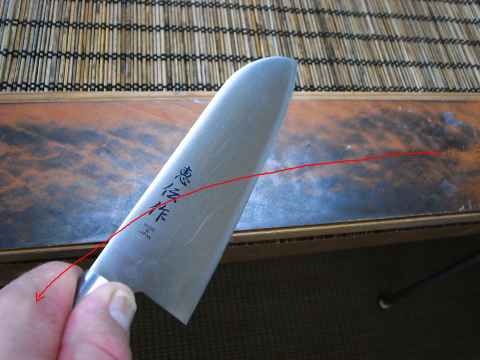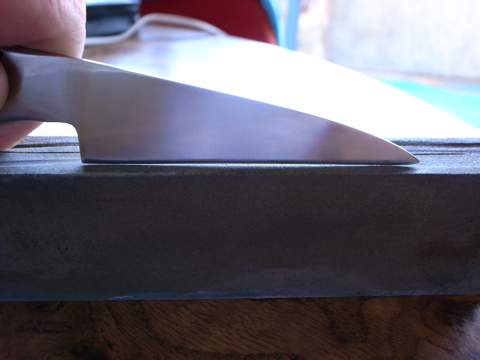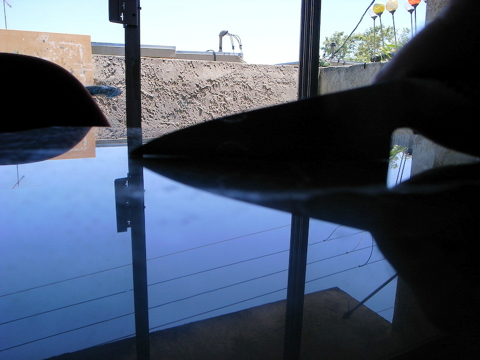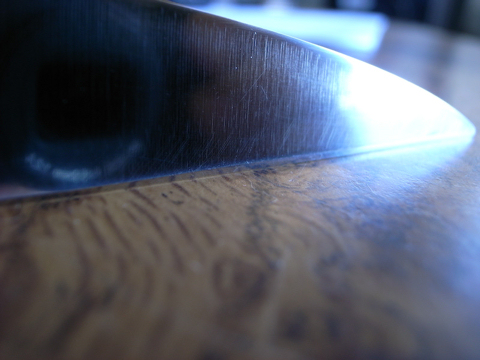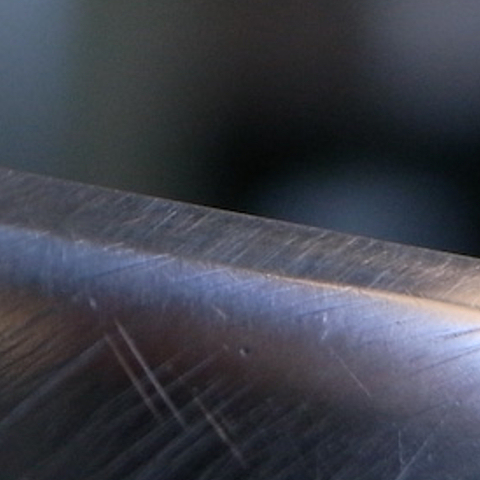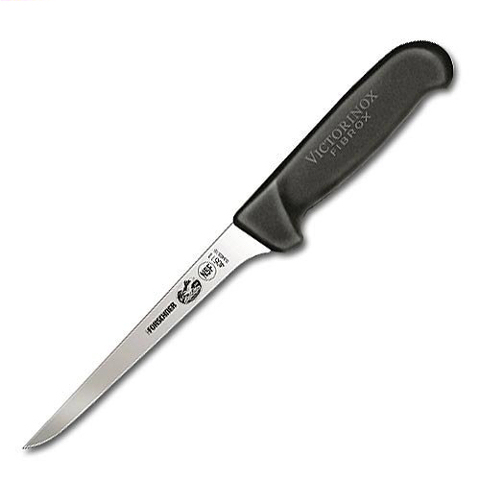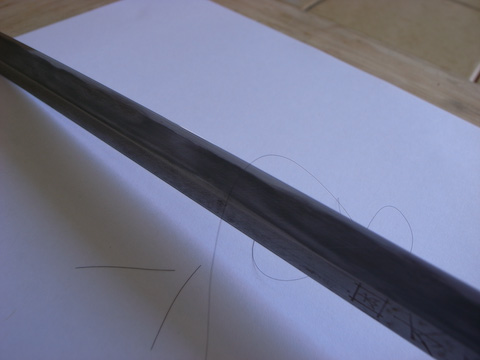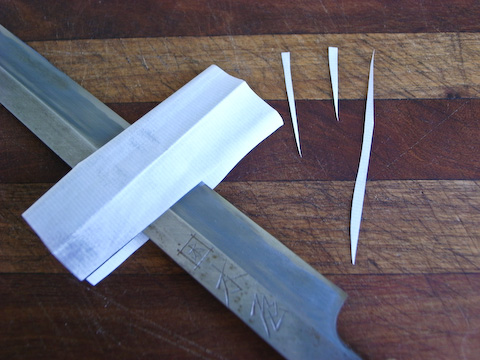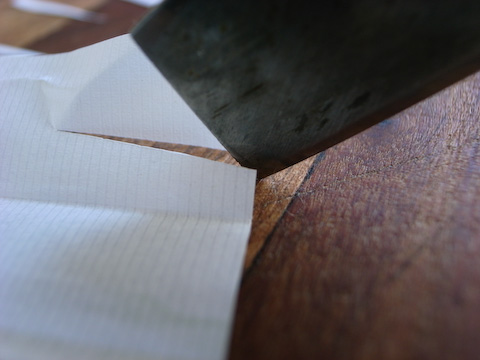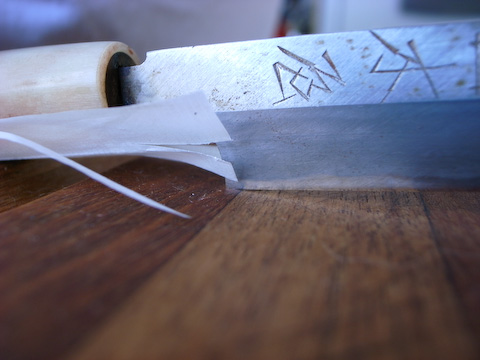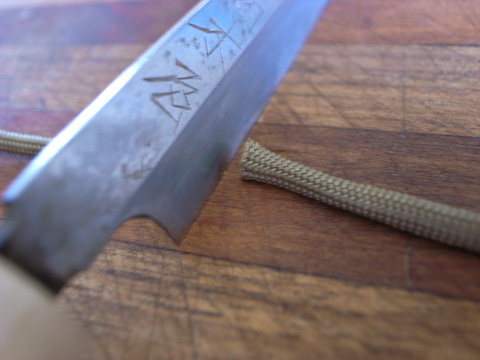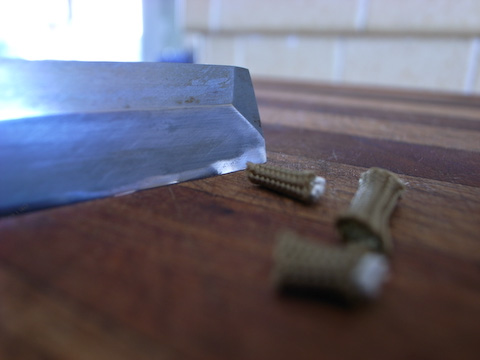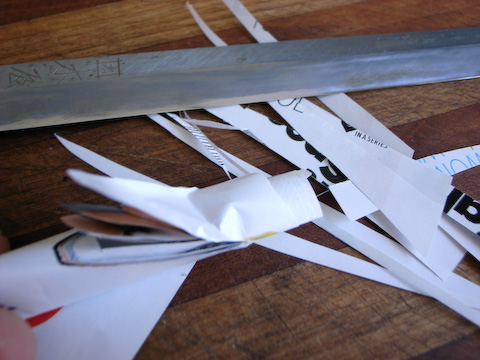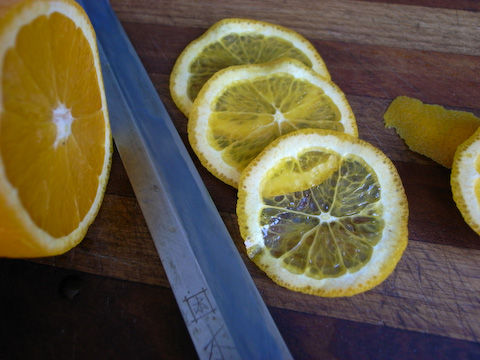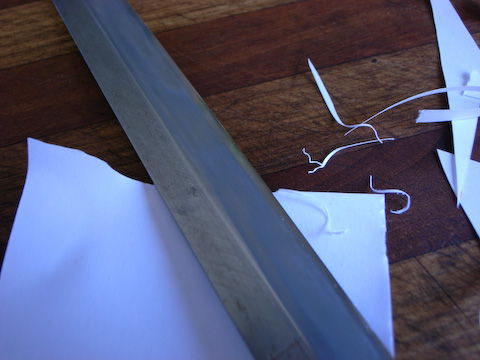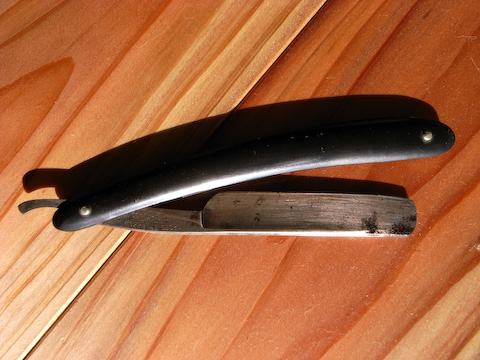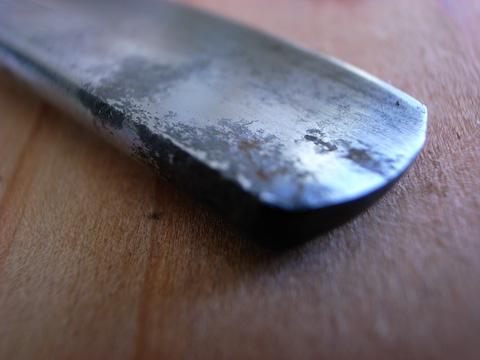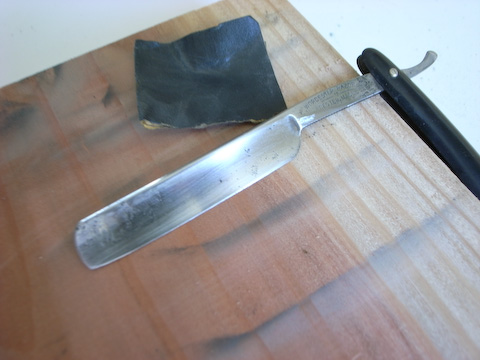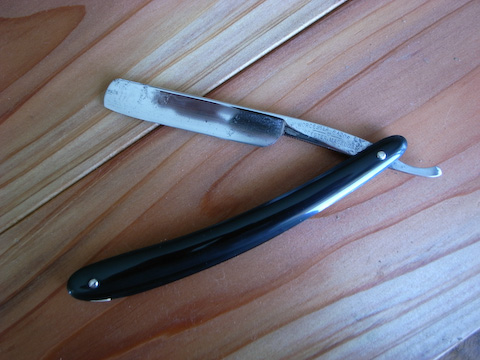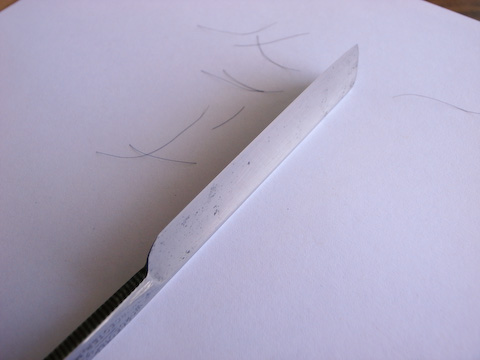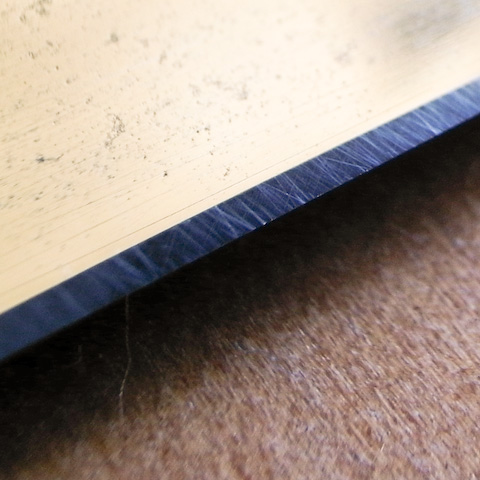Knife sharpening with Nubatama ume 4000 and 6000
Knife sharpening with the Nubatama ume 4k and 6k, are so different compared with the other stones in the series. First off they are both pre finishing stones, so I will mostly comment on how they feel and what kind of finish they leave. They are rather hard stones, so hardly no dishing, the mud is just black swarf from the steel, and they both cut fast for their grit range. In all other ways they are really different compared to each other and it is hard to believe they are from the same series of stones.
Knife sharpening progression
In the pictures bellow I will show the progression from unsharpened to strop, to demonstrate the whole knife sharpening progress and where the Nubatamas fits in, in the progress.
As you see the use of Nubatama ume 4000 in the sharpening progress, doing a fine job refining the edge. It feels super smooth, cuts well and doesn’t mud much, and it is not super rock hard so it still have a great feedback. The finish it leaves looks surprisingly more polished than I would have thought; it really feels and behaves like a Chosera 3000 stone. This would be a perfect final stone when sharpening soft steel knives.
Knife sharpening with the 6000 is very different to the 4000, it’s harder, cuts slower, and in close-up it refines the edge with a slightly finer scratch pattern. The most surprising though is that to the naked eye, the polish from the 4000 looks better. First I thought I did something wrong, so I retested several times side by side with different knives, and every time the 4000 left a better finish to the naked eye, but in close up the 6000 had a slightly better finish. A speculation could be that they have different abrasive density or different kind of binding material, I have no idea maybe, I could figuring it out if I haul out the big microscope, but I will save that project for the future.
They both cleanup equally on finer grit stones, I can’t see any difference at all.
Edge after a fast tour on the leather strop.
Conclusion:
I see no need to buy both of these stones for knives, because they are not that different. I love the 4000 it is a really nice fast cutting stone and it leaves an awesome finish, the only thing I don’t like is that green / yellow color that stains everything. The 6000 is also a really good stone, and leaves a finer scratch pattern, and the hardness and low mud makes it perfect for straight razors.
Magnus Pettersson hand sharpening, now serving the whole Westside with free pickup and delivery: Santa Monica, Brentwood, Pacific Palisades, Venice, Marina Del Rey, Culver City and West LA.
For free pickup and delivery on the Westside, call/txt 310-486-6068 or email.

